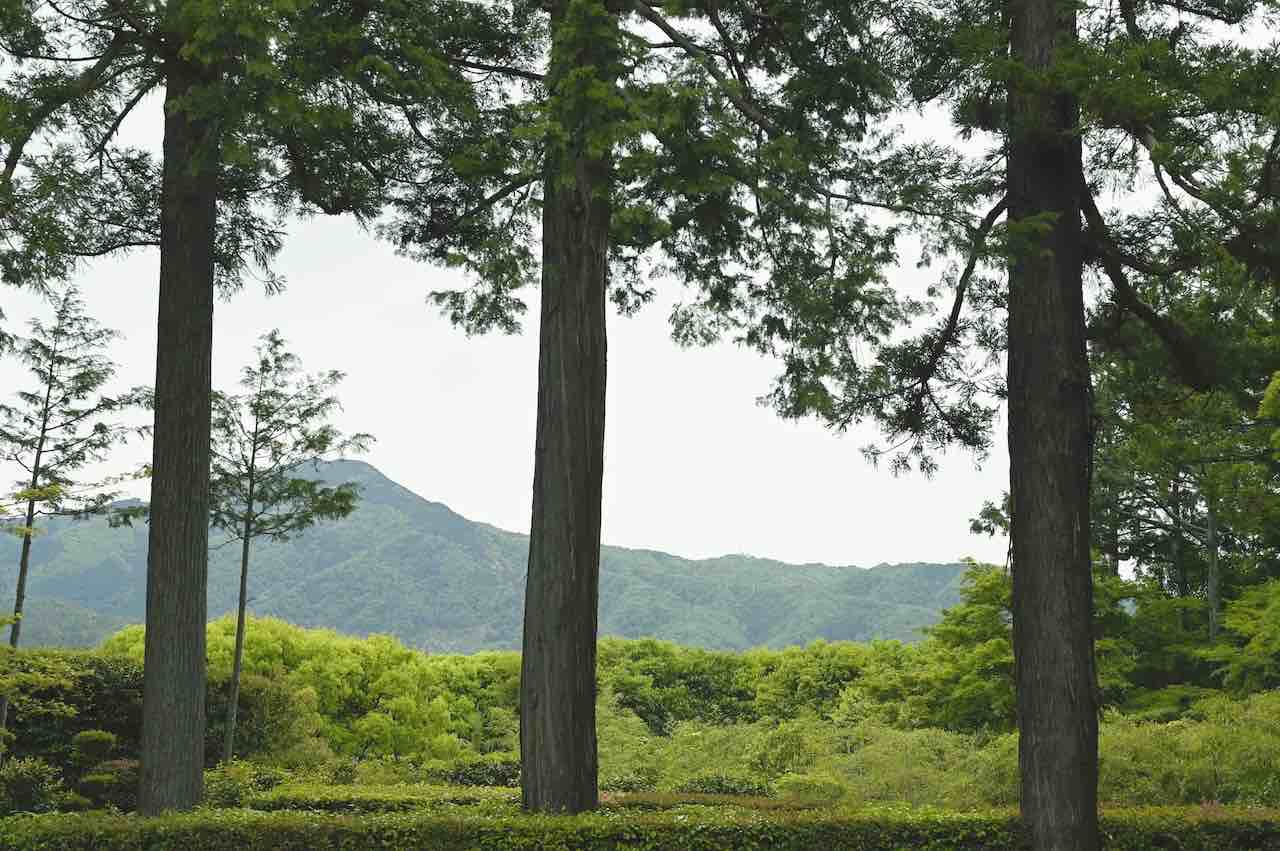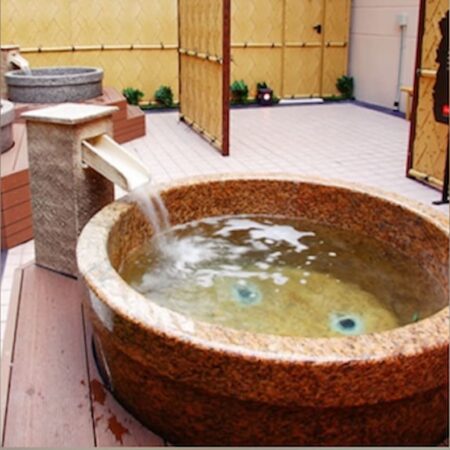A little-known spot of Kyoto Green maple garden-Protecting the aesthetic that hasn’t changed since 400 years ago [Entsūji] –

1 . What kind of temple is [Entsūji]?

In the early Edo era, Emperor Gomizuo chose Rakuhoku as a villa that holds a magnificent view and this is the trace of the villa, Hataeda Rikyū, where he spent his time.
It was transformed to be a Zen Temple in 1678 and designated as Keiganji Temple in 1680.
Famous for its magnificent dry landscape garden(Kosansui Teien)with Mt. Hiei as a backdrop, celebrities from around the world visit this spot.
■ Highlights ①: To leave the value of borrowed scenery to the next generation

Some people can’t stop crying when they see the nationally designated scenic garden, which incorporates Mt. Hiei into the scenery.
The horizontally extending fence, the cedars and cypresses that extend beyond it, and the ridgeline of Mt. Hiei in the background combine to create a unique landscape.
It has been about 400 years since Emperor Gomizuo built the temple and it is thanks to the people who have preserved the Japanese culture of the scenery that they can still see the unchanging views today.
The current priest is one of the central figures who made an effort to realize the “Kyoto City View Landscape Creation Ordinance” to protect the landscape so the precious scenery would not be bothered by urban development.
If the ordinance had not been enacted in 2007, the magnificent scenery, even the background of Mt. Hiei that is regarded as part of the garden might have disappeared from the scenery.
3 . ■ Highlight ②: Kago that tells the depth of the connection with the imperial family

Hataeda Villa was a mountain lodge of Emperor Gomizuo until it was fully constructed as the former Shugakuin Imperial Villa. The connection between the imperial family and the Tsūenji temple was very solid.
In addition to the Kago used by Teizumi to travel to and from the Kyoto Imperial Palace, a Chozubachi(a large bowl) in the shape of a chrysanthemum crest with 16 petals is still left in the corridor leading from the entrance to the Shoin room.
4 . ■ Highlight ③: Progenitor plants that are fascinating for its neat beauty

The fascination of Entsūji where nature and the tradition intersect sits not only on the dry landscape garden (Kosansui Teien).
In the garden, there are many rare progenitor plants of maple and weeping dogwood that cannot be seen at other places. Visitors would be entertained by sophisticated ultimate beauty.
ーーーーーーーーーーーーーーーーーーーーーー
[Entsūji]
☎075・781・1875
389 Iwakura Hataedachō, Sakyo Ward, Kyoto, 606-0015
Opening hours/10 am-4:30 pm during April-November(last reception at 4 pm)
10 am- 4 pm during December-March (last reception 3:30 pm)
Closed on Wednesday
Admissions fees/500 yen(for highschooler and older)
Parking space for 20 cars
ーーーーーーーーーーーーーーーーーーーーーー
PHOTO/Taka Natusmi、TEXT/Riho Tachihara






